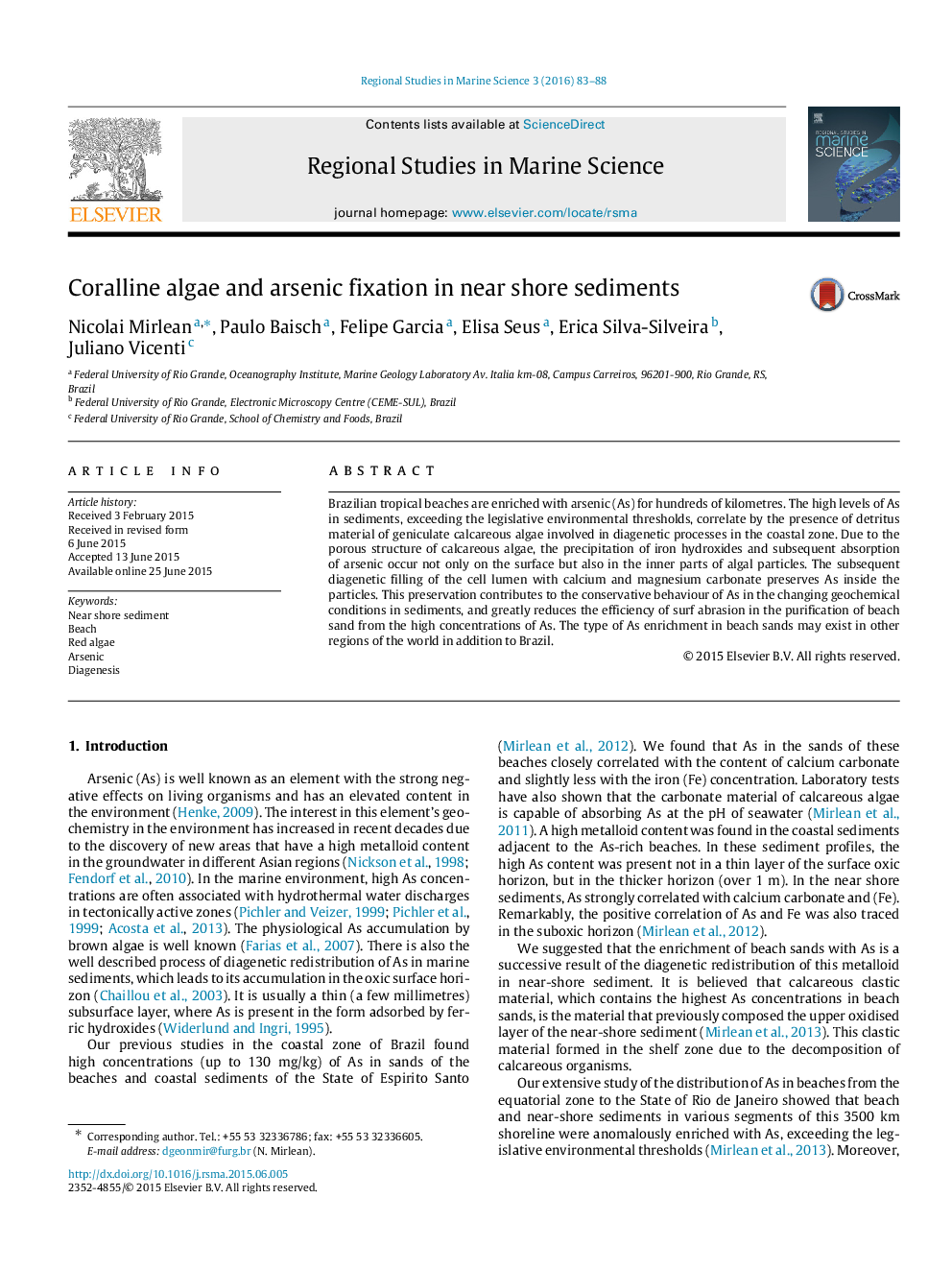| Article ID | Journal | Published Year | Pages | File Type |
|---|---|---|---|---|
| 6363112 | Regional Studies in Marine Science | 2016 | 6 Pages |
Abstract
Brazilian tropical beaches are enriched with arsenic (As) for hundreds of kilometres. The high levels of As in sediments, exceeding the legislative environmental thresholds, correlate by the presence of detritus material of geniculate calcareous algae involved in diagenetic processes in the coastal zone. Due to the porous structure of calcareous algae, the precipitation of iron hydroxides and subsequent absorption of arsenic occur not only on the surface but also in the inner parts of algal particles. The subsequent diagenetic filling of the cell lumen with calcium and magnesium carbonate preserves As inside the particles. This preservation contributes to the conservative behaviour of As in the changing geochemical conditions in sediments, and greatly reduces the efficiency of surf abrasion in the purification of beach sand from the high concentrations of As. The type of As enrichment in beach sands may exist in other regions of the world in addition to Brazil.
Keywords
Related Topics
Physical Sciences and Engineering
Earth and Planetary Sciences
Oceanography
Authors
Nicolai Mirlean, Paulo Baisch, Felipe Garcia, Elisa Seus, Erica Silva-Silveira, Juliano Vicenti,
